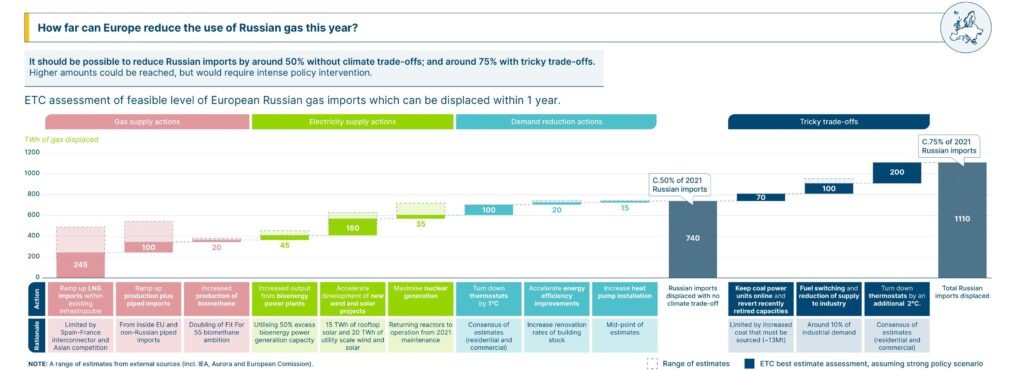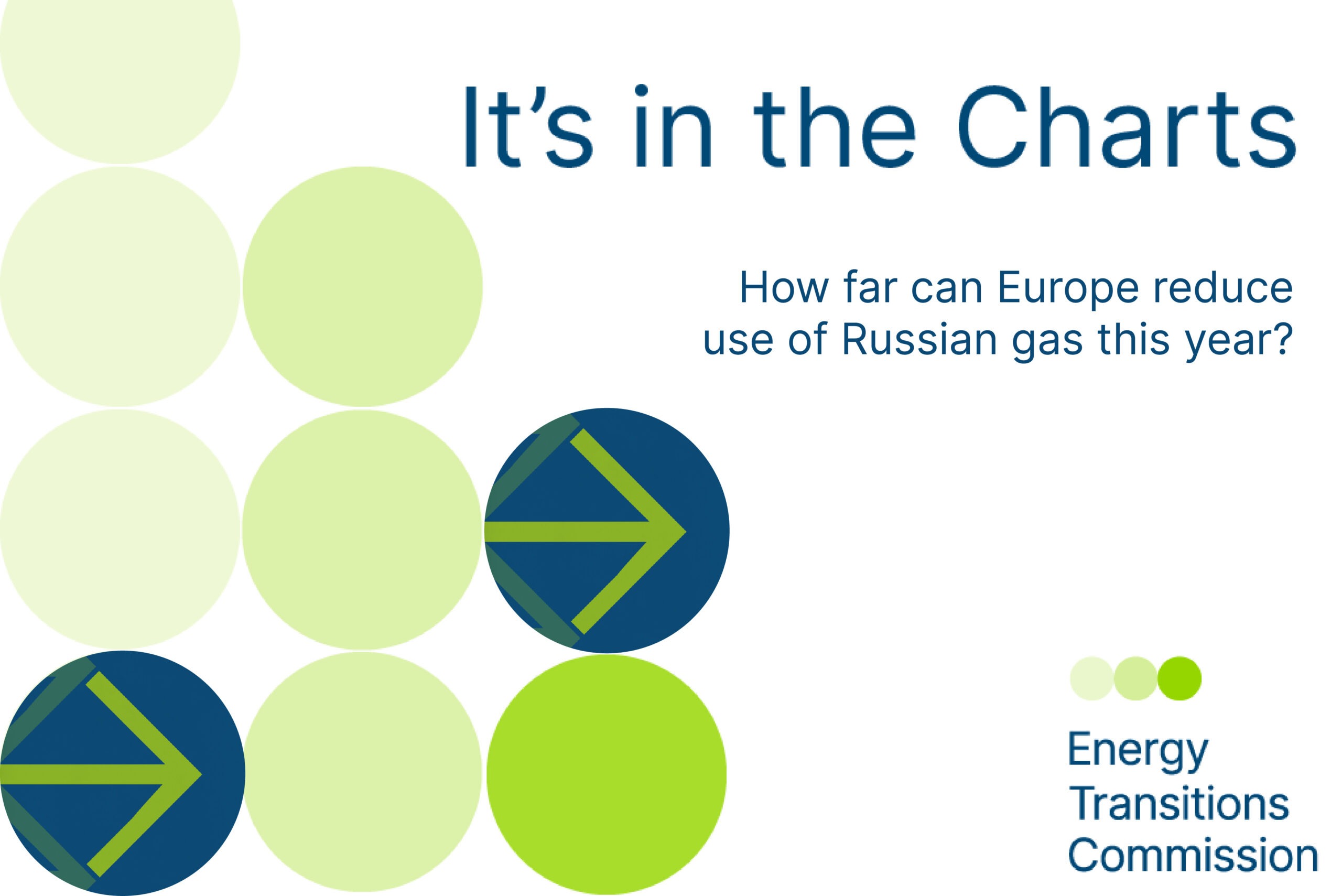In this ETC chart, we show an assessment of the feasible level of European gas imports which can be displaced within 1 year, considering gas supply actions, electricity supply actions, and demand reduction actions.
Options for the EU to reduce the use of Russian gas
In May, at the height of the Ukraine invasion and with the ensuing energy crisis deepening across Europe, the ETC published Building Energy Security Through Accelerated Energy. In this work, we set out different categories of response actions available in order to reduce the use of Russian gas – outlined in the chart below.
The first batch of recommended actions focused on filling gas storage levels by increasing gas supply (for example, via ramping up LNG and pipeline imports). This is indeed what has now occurred, with EU gas storage levels at the highest points on record for this time of year. However, further actions need to be taken to help Europe get through the winter – making the most of the available supply.
Winter 2022 short-term energy reduction actions
As we get into winter, the window for action is closing and the focus will need to shift towards demand side – rather than supply-side – action. The potential of turning down thermostats by 1°C is significant. This is an impactful quick win, as it allows us to save energy whilst also saving money, and could be encouraged through public information campaigns.

This chart was published in the ETC’s Building Energy Security Through Accelerated Energy Explainer, How far can Europe reduce use of Russian gas this year?
If you would like to reproduce this chart, please let us know.
Interested in receiving these insights in your inbox? Click here to sign up for our mailing list.



